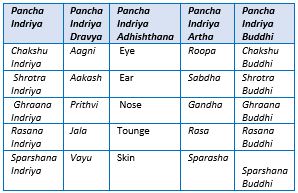Significance of Buddhi in Ayurveda as well as Modern Aspects
Keywords:
Ayurveda, Buddhi, Panchendriya Buddhi, ManobuddhiAbstract
In Ayurveda, the concept of Buddha covers a wide range. It is actually considered the ultimate knowledge. In the beginning, proper perception of knowledge takes place by Indriyas later it is processed with Mana, and after Manovyapara the Buddhi was formed. Human intelligence is the ability to acquire and apply knowledge and skills. Language, memory and speech are essential for acquiring and applying knowledge, hence considered as higher intellectual functions. In Ayurveda, till date, there aren’t enough studies available on the concept of Buddhi. Here the detailed description of the concept of Buddhi and its significance from an Ayurvedic perspective have been underexplored. Certain Buddhi Gunas is explained in Mahabharata. It can be correlated with different intellectual functions. On the basis of different sensory perception, Buddhi has two types’ Panchendriya Buddhi and Manobuddhi. Anatomically the Panchendriya Buddhi considered as different sensory cortices and their association cortices because the functions are same. Physiologically the Buddhi is considered as Manobuddhi which it can be functionally correlated with the process of cognition.
Downloads
References
R K Sharma, Bhagwan dash. Charaka Samhita, Shareera sthana 1/22-23, Varanasi, Chaukhamba publications 2015; vol 2. p. 316.
R K Sharma, Bhagwan dash. Charaka Samhita, Vol. 1. Vidyadhar Shukla, editor. 1st ed. Varanasi: Chaukhamba Sanskrit Sansthan; 2002. p. 678.
Jha Srujan. Amarkosha online application
Jha Srujan. Amarkosha online application
Prof. K. R. Srikantamurty. Sushruta Samhita, Shareera sthana 1/4. Varanasi: Chaukhambha Orientalia; 2012. p. 4.
Dalhana commentary. Sushruta Samhita, Shareera sthana1/27: Chaukhambha Vishvabharati Oriental; 2013; vol 2.
R K Sharma, Bhagwan dash. Charaka Samhita, Sutra sthana 8/12 ; Varanasi, Chaukhamba publications 2015; vol 1. p. 167.
Acharya VJ, editor. Agnivesha, Elaborated by Charaka and Dridhabala Commentary by Chakrapani. Charaka Samhita, Sutra Sthana 8/3 and 12. Varanasi: Chaukhamba Surbharati Prakashan; 2008. p. 55 6.
Guyton and Hall Textbook of medical Physiology. Philadelphia, PA: Saunders/Elsevier; 2011.















